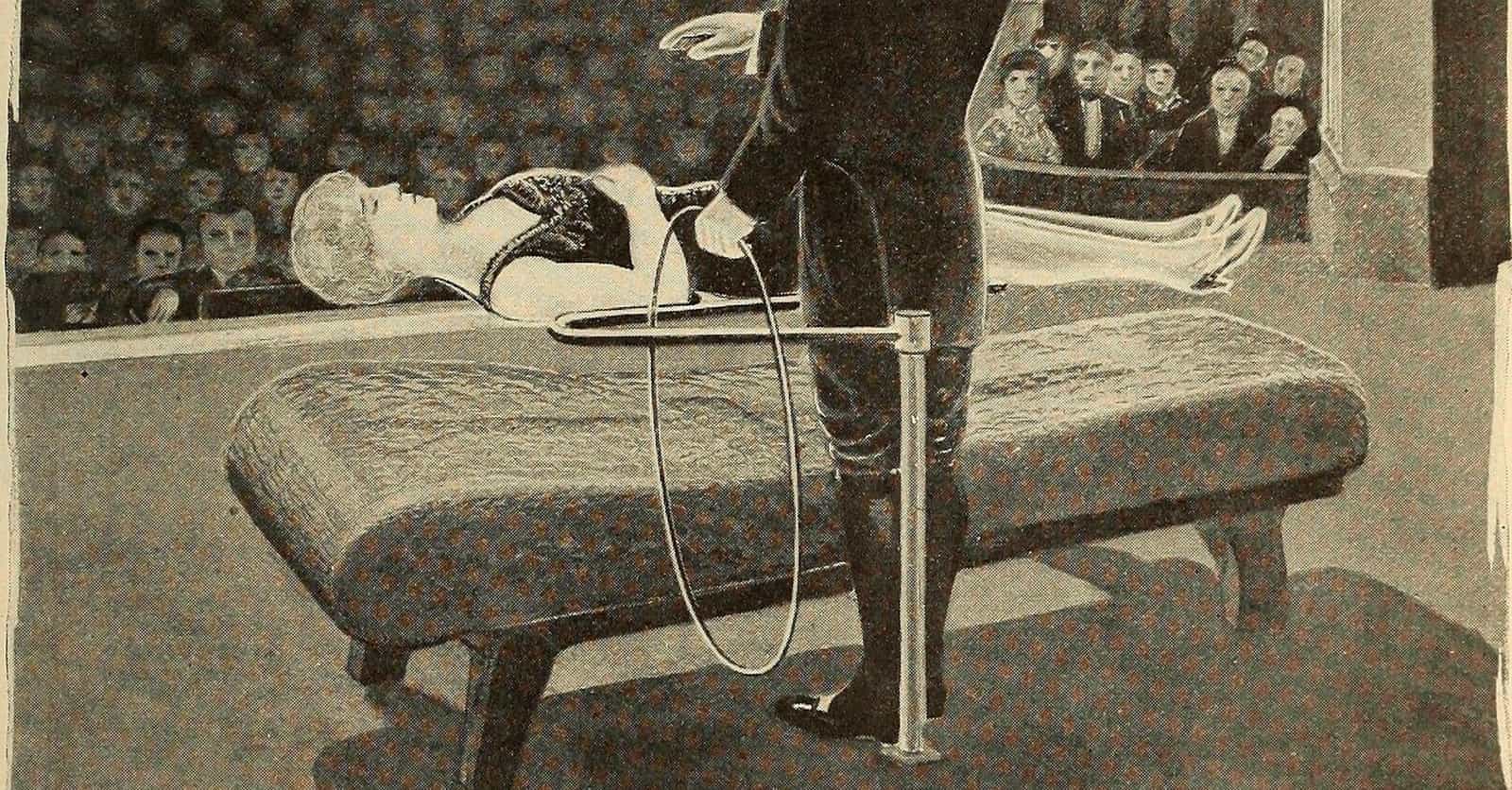Underwater Box Escape
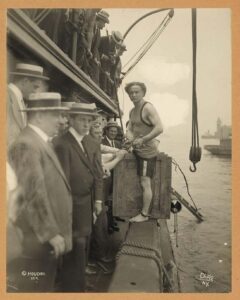
The Trick:
Harry Houdini was a gifted magician who specialized in escape tricks. One of the most memorable was the underwater box escape. Houdini was handcuffed and climbed into a wooden crate that was then nailed, trussed, and chained shut. It was hoisted by a crane into New York’s East River and sank. A few minutes later, Houdini would emerge, free of his bonds, at the water’s surface.
How It’s Done:
The crate was specially designed for this trick. It had small holes in it that allowed Houdini to easily breathe while he waited for the box to be nailed. The holes would also help the crate sink. The crate appeared to be held together by nails, but one of the sides of the square crate had two fake nail heads. That part of the crate was held shut by a hinge on the inside. Once Houdini was inside the crate and it was being lifted by the crane, he would take off the handcuffs (he kept hidden keys). After the crate hit the water and sank sufficiently, he would simply kick open the crate at the hidden hinge and swim to the surface.
Making The Statue of Liberty Disappear
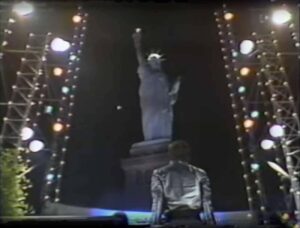
The Trick:
On a live CBS special in 1983, David Copperfield did the impossible and made the Statue of Liberty disappear. The live audience, television crew, and stage are all on a large platform viewing the Statue of Liberty in the distance.
Also on the platform, framing the statue, are two scaffolds decorated in lights. Copperfield raised a curtain between the scaffolds to hide the statue and gave a short soliloquy on cherishing freedom. Then the curtain dropped, the lights flashed, and the Statue of Liberty was gone.
How It’s Done:
The platform rotated. The vibrations of its movement were masked by loud music being pumped through speakers while Copperfield spoke over the noise.
When the curtain dropped, the platform had moved so the statue was blocked from view by one of the scaffolds. Its lights were turned on so bright that no one could see the statue behind them.
Zig-Zag Box
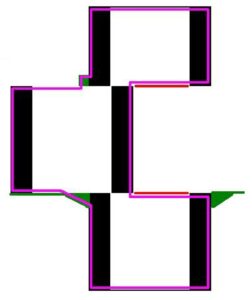
The Trick:
The Zig-Zag illusion was first performed in the mid-1960s by magician Robert Harbin. In the illusion, an assistant steps into an upright cabinet, with their face, hands, and a foot visible through openings in the front. The magician inserts metal blades horizontally in the cabinet’s midsection, dividing it into thirds.
The magician then slides the cabinet’s midsection apart from the top and bottom thirds, so it looks as though the assistant’s midsection has been pulled away from the rest of them. A small door on the cabinet’s midsection can be opened to see the assistant’s body inside.
At the end, the assistant’s midsection is slid back into place, the two blades removed, and they step out of the cabinet in one piece.
How It’s Done:
This is the rare trick where the assistant is responsible for the heavy lifting.
The box is larger than it appears because the black strips down the sides make it appear narrow. That black space is actually usable. The assistant still fits in the rearranged box, though it’s a very tight fit. The blade is inserted on the right side and looks like it takes up more space than it does, with the handle and protruding box space taking up most of the blade.
The trick relies on a flexible assistant and items being presented to appear as different sizes than they actually are.
David Copperfield’s ‘Lucky 13’ Trick

The Trick:
David Copperfield may be one of the most successful modern magicians, and “Lucky 13” is a trick he has regularly performed during his Las Vegas shows.
Large bouncing balls are thrown into the audience to select 13 volunteers at random. The 13 people are led onto the stage and made to sit on a raised platform where a curtain is raised over them. They shine flashlights through the curtain to show they are still there. The curtain is dropped with explosions and the 13 people disappear.
Copperfield redirects the audience’s attention to the back of the theater, and the 13 volunteers reappear behind them.
How It’s Done:
A 58-year-old British tourist injured himself in 2013 while participating as one of the volunteers in the trick and sued Copperfield for damages. To defend himself, the magician revealed the trick’s secrets in court.
Just as the sheet is being pulled from the raised platform with a flourish, assistants are helping the 13 volunteers out of the back of the platform and into a backstage area. They are led through a passageway around the theater and to the back where they can “reappear.”
The man that sued said it was dimly lit and had construction material lying in the pathway. Copperfield said thousands of people have participated in the trick over the years and only this one man has been injured.
Handcuff Escape
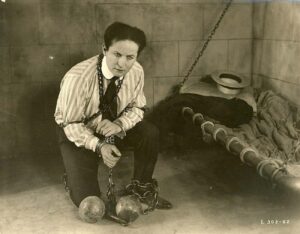
The Trick:
Handcuff acts were a popular genre for magicians and escape artists during vaudeville theater. This was where Harry Houdini first rose to prominence as the “Handcuff King,” an escape artist who could not be held by any pair of cuffs.
The magician would be handcuffed and then escape from their bonds in front of the audience. Often this act would be part of a touring show, and the local police or a locksmith who was particularly proud of their design would provide the handcuffs.
How It’s Done:
Just as there are many types of locks, there are many ways to escape them. The most common way is that the magician has a key.
Houdini had a “remarkable knowledge of locks and locking devices.” He collected and studied locks all of his life and remembered how each type worked and could be opened. Houdini studied the handcuffs of police and locksmiths of the towns he was about to visit. Any particularly unique keys he would ask to see first and pocket, replacing them with a similar-looking key until after the trick.
During the trick, Houdini would conceal the keys in secret pockets or a bag strapped to his leg. Later, he built a belt that contained keys and tools for the cuffs, which ran on tiny ball bearings that revolved by pressure from his arm.
